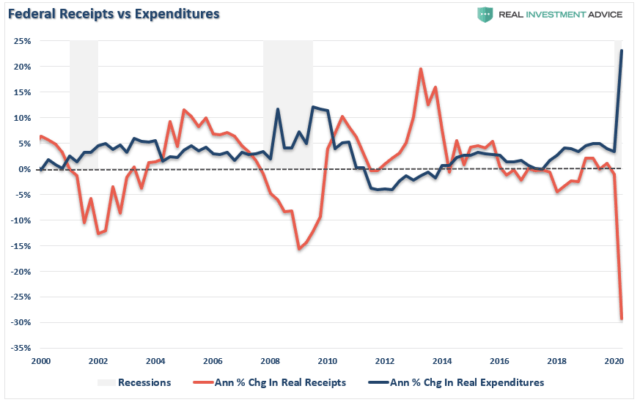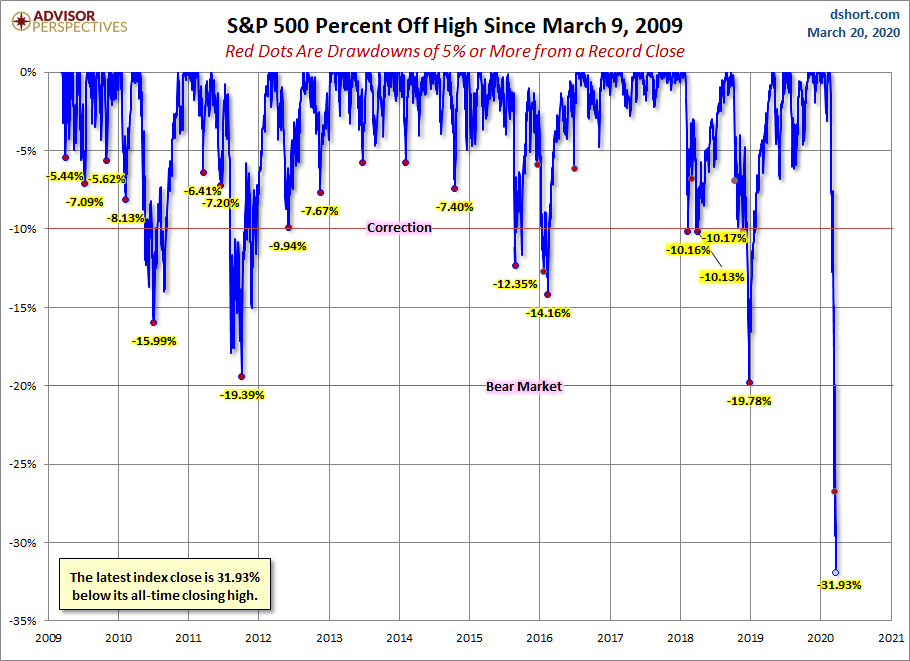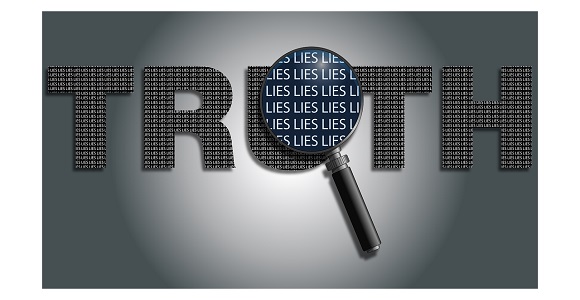

Due to some sustained winds, I had a large limb of a sizable ash tree blown down. And, in consideration of the Emerald Ash Borer, which is sort of the COVID-19 of ash trees complete with its own federal quarantine regulations, I decided not to save the tree. Instead, I chose to cut it down in 18-inch chunks, stack it, and let it season in the round. Then, as needed, I’ll split it and restack it prior to its ultimate delivery into my high-efficiency wood burner on some crisp winter day.
Continue reading “On Quarantines and Trees, Pencils, Technology, Art and Music”
In Part 1 of this article I pointed out how we have allowed ourselves to be cowed by authoritarian “experts” who have proven to be nothing but incompetent and wrong every step of the way, while the financiers have used the crisis once again to pillage the citizens as they did in 2008/2009.
The absurdity of shutting down this country based on academic death models that make economist and climatologist models look highly accurate in comparison, can be seen in the ludicrousness of the following chart. And realize we did this on purpose because of a virus that will kill .018% of the U.S. population. And most of those deaths will occur in several highly dense urban enclaves, with the rest of the country barely affected.
By shutting down the country the government has crushed virtually every business in the country and putting tens of millions out of work, with resulting crash in tax revenues at the Federal, State and Local level. At the same time, Trump and everyone in Congress have become Bernie Sanders socialists, except most of it is corporate socialism. The deficit was already on track to top $1.2 trillion, but with the $2.2 trillion stimulus package, and more to come, the deficit this year and next will approach $3 trillion.

“It has been more profitable for us to bind together in the wrong direction than to be alone in the right one. Those who have followed the assertive idiot rather than the introspective wise person have passed us some of their genes. This is apparent from a social pathology: psychopaths rally followers.” ― Nassim Nicholas Taleb, The Black Swan: The Impact of the Highly Improbable
Continue reading “THE ROAD TO PERDITION IS PAVED WITH EVIL INTENTIONS – A FINAL RECKONING”

U.S.—The U.S. has become an absolute hellscape, a terrifying place where you can’t always get exactly what you want from Amazon in two days.
In fact, experts have reclassified the United States as a third-world country now that Amazon deliveries can take three days, a week, or even longer.
“It’s basically Somalia at this point,” said Kris Paulson, an essential oils representative from Washington state. “If I can’t order something I decided that I absolutely need to have on a whim and have it arrive in 1-2 days, then the American dream is dead.”
Life hacks during the Coronavirus pandemic. How to get around while under quarantine:pic.twitter.com/e0Kk0mm963
— Bruce Porter, Jr. (@NetworksManager) March 28, 2020

“There are decades where nothing happens; and there are weeks where decades happen.” ― Vladimir Ilyich Lenin

“A Crisis mood does not guarantee that the new governing policies will be well designed or will work as intended.
To the contrary: Crisis eras are studded with faulty leadership and inept management—from President Lincoln’s poor record of choosing generals to President Roosevelt’s colossal blunders with such alphabet soup agencies as the AAA, NRA, and WPA.
What makes a Crisis special is the public’s willingness to let leaders lead even when they falter and to let authorities be authoritative even when they make mistakes.
Wars become more likely and are fought with efficacy and finality. The risk of revolution is high—as is the risk of civil war, since the community that commands the greatest loyalty does not necessarily coincide with political (or geographic) boundaries. Leaders become more inclined to define enemies in moral terms, to enforce virtue militarily, to refuse all compromise, to commit large forces in that effort, to impose heavy sacrifices on the battlefield and home front, to build the most destructive weapons contemporary minds can imagine, and to deploy those weapons if needed to obtain an enduring victory.” – Strauss & Howe – The Fourth Turning
The quote by Lenin has been reverberating in my conscience for the last few weeks. I believe the quote from Strauss & Howe provides context to what has happened and will happen as this Fourth Turning advances towards its climax. I began a new role in my organization two weeks ago, after only seven months in my previous role. I’ve been in non-stop crisis meetings, as this coronavirus pandemic has flipped everyone’s world upside down. As of Thursday, we were ordered to work from home.
During the quarantine, a pianist in Barcelona went to his balcony to play “My Heart Will Go On” for his neighborhood.
After he started, a sax player in the building next door joined him.
I’m here for all of this…?❤️pic.twitter.com/3utPYfDbua
— Rex Chapman?? (@RexChapman) March 18, 2020


“So, first of all, let me assert my firm belief that the only thing we have to fear is…fear itself — nameless, unreasoning, unjustified terror which paralyzes needed efforts to convert retreat into advance. In every dark hour of our national life a leadership of frankness and of vigor has met with that understanding and support of the people themselves which is essential to victory. And I am convinced that you will again give that support to leadership in these critical days.”- Franklin D. Roosevelt – March 4, 1933
Franklin D. Roosevelt spoke these words during his first inauguration at the depths of the Great Depression in 1933. The narrative taught in government schools is how FDR’s words invigorated the nation and inspired the people to show courage in the face of adversity. His terminology was that of a general leading his troops into battle.
In Part One of this article I exposed the numerous false narratives being peddled to the masses, as this Fourth Turning is entering the intense phase headed towards an unknown climax.

I’ve been expecting the next shoe to fall in this Fourth Turning for years, but the financial elite have pulled the debt levers to keep the Ponzi scheme alive far longer than a reasonable person would expect. We are only six weeks into 2020 and it seems like a year’s worth of major events have already occurred. The year started with the assassination of Qasem Soleimani in Iraq.
For the next week the world was awash in rhetoric about World War III and possible revolution in Iran. Accusations of Trump using the Wag the Dog method to deflect the negative press from the impeachment hearings were rampant among the half of the country that despises Trump. Soleimani was lauded as a hero by the left and a terrorist by the right. Now, the entire episode seems like ancient history, as more interesting squirrels have arisen for the propaganda media to chase.
The entire month of January was occupied by the ongoing coup/impeachment against Donald Trump. Schiff, Nadler and Pelosi doing their best impression of the three stooges, conducted a laughable prosecution in the House, revealing this was nothing more than a desperate attempt to avoid losing to Trump in a November landslide. The predictable trial in the Senate resulted in an acquittal and Trump’s popularity soaring to all-time highs, as independents realized the Democrats misused the power of impeachment for purely political purposes. Trump’s SOTU address infuriated Pelosi to such an extent it provoked her into acting like a petulant child, tearing up the speech. Future campaign ads wrote themselves.
MUNCIE, IN — In 1893, an outbreak of smallpox caused public health officials to take drastic, draconian measures to prevent the spread of disease. The unpopular, violent quarantine that followed provides a memorable case study of the failings of forcible mandatory quarantine of a city.
* * * * *
The incident began when Muncie’s Health Officer, 34-year-old Dr. Frank G. Jackson, was informed of a serious illness that required his investigation. On Thursday, August 17, 1893, the young doctor trekked across town to discover a patient with a high fever and skin eruptions, described as “black chicken pox.”
Early on, there was disagreement among doctors about whether the first patient — and subsequent patients — actually had chicken pox or the more severe smallpox virus. By the time there were 14 suspected cases, Dr. Jackson convinced the city council to take action and institute a domiciliary quarantine of the infected families. The city health officer was granted arrest powers, and the newly-formed Committee on Public Safety was clothed (in the words of the resolution) “with full power to take whatever measures are in their judgement necessary to prevent further spread of the disease, and support the quarantine declared by the health officer.”
By August 22, a quarantine was in full effect, complete with armed guards with the authority to arrest anyone who disobeyed quarantine restrictions. Initially, the quarantine was restricted to containing the infected houses, which were marked with yellow cardboard signs reading “Smallpox.” Red flags were posted to segregate the boundaries of the quarantine zone — an area eight blocks wide and sixteen blocks long. The guards were posted outside the infected houses to prevent unauthorized entry or escape. They were told to kill all stray cats and dogs as a precaution against the spread of the disease.
The City Council invoked a mandatory vaccination effort on August 22, and sent government agents “house-to-house in the infected district to vaccinate and inspect for unsanitary conditions.”
A week after the first public declaration, on August 25th, there were 11 cases under treatment; one woman had died.
But many citizens were skeptical and defiant of the dramatic measures being used against them. Residents frequently sneaked out of the backs of their homes to visit neighbors and friends, while armed patrols marched in the front.
The public saw reasons to doubt the city’s doctors, who bickered over the best way to treat smallpox. Many people viewed vaccines as dangerous and ineffectual; some patients got smallpox in spite of their inoculation. People were also disgusted by the vaccines, derived from “aseptic bovine lymph” — the pus of blisters found on infected cows housed in “vaccine stables.”
There was a mass exodus from Muncie during the early stages of the quarantine, in which an estimated fifteen hundred people hurriedly fled to live with friends and relatives elsewhere throughout the country.
Mayor Arthur W. Brady assured Muncie residents and the surrounding towns that authorities had the situation “thoroughly under control,” despite numerous failings of the guard staff. The following day, on August 29th, twenty out of twenty-two guards resigned their posts, citing undesirable risks and low pay.
By September 7th, there were dozens of cases of smallpox in Muncie. The Indiana State Board of Health stepped in and took the situation to an extraordinary level, curtailing civil rights in the name of public health. The following proclamation was issued:
1. No public meeting of any sort should be held. No exercises should be held at any church, lodge, opera house, ball ground, or any place (including school when it was to open) of like character.
2. The people generally should remain at their homes as much as possible. Congregations of persons on the streets should be avoided. The police were directed to see that no crowds collected on the street. Loitering or loafing would subject parties to arrest.
3. Special care should be taken to keep at a good distance from the infected houses. No communication should be had with persons infected or in danger of infection.
4. Everybody should be vaccinated, whether vaccinated in the past few years or not.
Muncie officials were so fearful that they suspended library services, burned a number of books, and fumigated every piece of mail and luggage leaving the city.
Aside from bans on public assembly and compulsory vaccination, the quarantine prevented the freedom of travel for Muncie residents. People wishing to leave the city were required to carry certificates from the public health officials declaring that they had been vaccinated and were free of infection.
Trains, being the dominant mode of inter-city travel, were restricted to passengers who could present certificates of vaccination from public health officials. Ticket agents were forbidden by the State Board of Health to sell tickets to anyone without the proper government paperwork, and a special police task force set up checkpoints at the train station to ensure compliance.
The neighboring towns became increasingly paranoid of Muncie residents. Special policemen patrolled the roads to check travelers for their government-issued health certificates. Traveling salesmen had a particularly difficult time during the quarantine, and were frequently subject to arrest.
When patients succumbed to the virus or the complications that followed, they were buried in the middle of the night on the first night after their death. No public funerals were permitted.
Eventually the domiciliary (at home) quarantine tactic was scrapped, and sick people were forcibly removed from their homes and taken to the city’s two newly-designated “Smallpox Hospitals,” where patients were corralled and languished for weeks on cots. The average quarantine time was 40 days.
The favorite disinfectant and treatment of the day was a “bi-chloride of mercury,” a substance (later found to be toxic) that was rubbed topically on sores, and used to bathe smallpox patients. It was liberally applied to contaminated surfaces, and even rubbed onto to the screens of doors and atomized into the air at hospitals and schools.
The city council even passed an ordinance authorizing health officials to “use all necessary means, including force and the breaking of doors if required, to compel the removal of all persons having smallpox.”
The warrantless detainment order was met with a torrent of criticism. Although prominent city attorneys touted it as “constitutional,” others strongly disagreed. Even the police refused to enter homes without a warrant.
It turned out to be the health officials who payed the least regard to the rights of the afflicted. When a known smallpox sufferer refused to go to the hospital, sometimes even the doctors themselves would force their way into the homes to drag them into quarantine.
This thuggish behavior was met by resistance from some residents. There were reported instances of homeowners repelling the authorities with firearms. At least one pesky health official was wounded from a gunshot blast to the arm when an “irate father” refused to relinquish his child into government custody. When residents were very resistant to being taken to the hospital, there are even reports of authorities “starving out” the families until compliance was gained.
Resenting their foul treatment, some indignant residents even purposely spread the disease by throwing infected rags out of their homes into surrounding spaces.
Dr. Jackson, as Muncie Health Officer, criticized the reluctance of local judges in accepting affidavits against families who were suspected of concealing an infected family member. He lamented that “there was found to be no authority by which we could compel persons to submit to an inspection of their premises, although we were certain that cases of small-pox were being concealed.” He added that “in all of such cases, we made and enforced our own laws, as in times of martial law.”
While Dr. Jackson approved of forcible home entry, he later observed that the compulsory hospitalization ordinance he oversaw “was found impossible to enforce without absolute loss of life by violence.”
As many as 150 guards were employed at the height of the Muncie quarantine.
The state quarantine order was finally lifted on November 4th, and one of the two Muncie smallpox hospitals was closed. For the first time in 9 weeks, churches were allowed to hold services and schools reopened their doors.
As of December 1893, there had been 150 cases of smallpox reported in Muncie, and 22 deaths, according to Dr. Jackson’s report. The compulsory vaccination order affected 10,00-13,000 people.
Both Dr. Jackson and County Health Officer Dr. Hugh Cowing concluded that “house quarantine was an utter failure.”
The Muncie quarantine provides a valuable historical lesson in the lengths governments will go to during the hysterical times of public health crisis. Compulsory vaccination was later challenged in the U.S. Supreme Court in Jacobson v. Massachusetts (1905). The court, of course, sided with the government and decreed that individual rights may be subordinated to the “common good” and individuals may therefore be subjected to the compulsory police powers of the state.
REFERENCES:
1. Twelfth Annual Report of the Indiana State Board of Health (1893): 103-186.
2. Eidson, William G., “Confusion, Controversy, and Quarantine: the Muncie Smallpox Epidemic of 1893,” Indiana Magazine of History 86 (1990): 374-398.